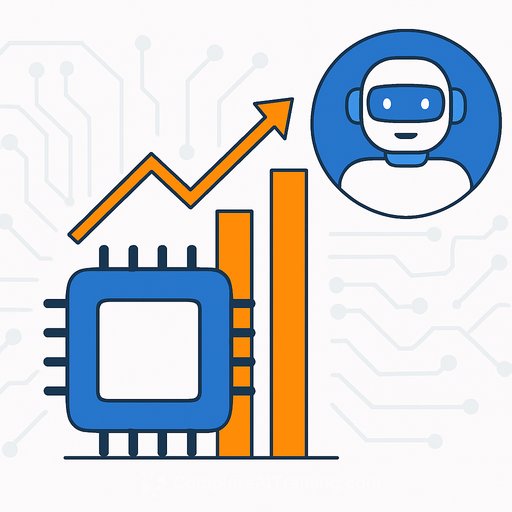AI Infrastructure Surge Poised to Drive Korean Chip Sales to Record Levels by 2028
Global demand for AI chips is set to hit a short-term peak in 2028. That wave is expected to push sales of South Korean semiconductors to nearly double from current levels as data centers scale up.
The driver is clear: AI servers and infrastructure. One estimate points to around US$1 trillion earmarked for data center build-outs by a leading AI chip vendor, pushing memory and foundry orders higher across the supply chain.
Key numbers sales teams should track
- HBM (high bandwidth memory) market: projected at $41.6 billion this year, up 125.5% year-over-year.
- Potential scenario: if HBM capacity rises 2.5x from current levels, sales of South Korean semiconductors could nearly double within three years.
- Memory chips market: projected to reach an all-time high of $201 billion.
- Foundry market: projected at $170.8 billion, up 22.1% year-over-year.
- Outlook: strong performance expected through 2028, despite concerns around the fast rise in chip stocks.
Why this matters for sales
Budgets are flowing into AI infrastructure-servers, HBM, GPUs, networking, storage, and system integration. That means multi-threaded buying cycles, large multi-year deals, and cross-functional stakeholders (IT, finance, product, compliance).
If you sell hardware, cloud, software, or services tied to AI workloads, this cycle creates bigger deal sizes, more expansion paths, and longer contracts.
What to prioritize in your pipeline
- AI server deals: bundle compute + HBM + networking + support to increase average contract value.
- Data center upgrades: pitch power, cooling, and interconnect improvements as a prerequisite for AI rollouts.
- Storage tiers for training/inference: position fast tiers for hot data and economical tiers for archives.
- Foundry-aligned timelines: sync proposals with chip and HBM availability to avoid fulfillment gaps.
- Co-selling with ecosystem partners: ISVs, SI/consulting, and cloud providers to reduce friction and speed deployment.
Timing and territory strategy through 2028
With demand peaking by 2028, plan multi-year sequences now. Aim to lock in framework agreements and options that scale capacity as HBM supply expands.
- Front-load account mapping for data center operators, hyperscalers, telcos, and AI-heavy enterprises.
- Use capacity outlooks to anchor delivery schedules and prevent missed quarters due to constraints.
- Package financing and consumption-based models to win competitive bake-offs.
- Align proofs-of-concept with customer model roadmaps to speed conversion.
Risks to watch (and how to sell around them)
- Stock volatility: customers may hesitate on timing-offer phased rollouts and price protections.
- Supply constraints: secure allocations early; propose alternative configurations to keep projects on track.
- Policy and export controls: keep compliance front-and-center; offer clear documentation and region-specific SKUs.
- Workload shifts: design modular solutions that adapt across training and inference without major rework.
Next steps
- Stay close to data center roadmaps from leading AI chip vendors. Reference materials: NVIDIA Data Center Overview.
- Upskill your team on AI buyer conversations and use cases by role: AI courses by job.
Bottom line: AI infrastructure spend is accelerating through 2028. Position your offers around HBM-driven upgrades, data center capacity, and multi-year flexibility to capture the upswing.
Your membership also unlocks:






